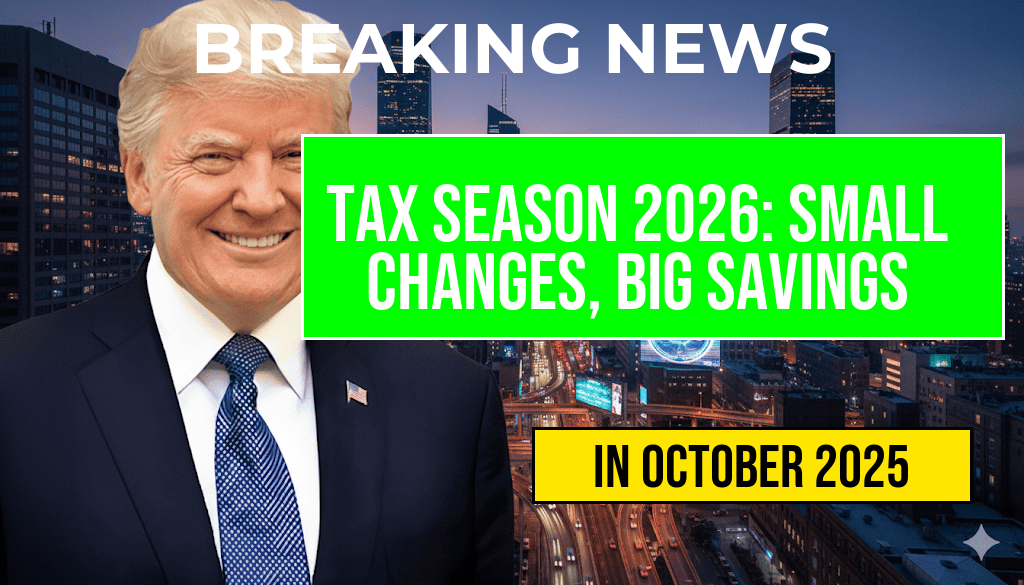Tax Season 2026: Bloomberg Forecasts Minor Bracket Changes That Could Save You Hundreds
As taxpayers prepare for the upcoming 2026 tax season, financial analysts at Bloomberg suggest that recent adjustments to income brackets and standard deductions may lead to modest savings for many Americans. While the changes are not dramatic, they reflect ongoing efforts by policymakers to fine-tune the tax code amid inflationary pressures and economic shifts. The forecast indicates that most individuals and households could see reductions in their tax liabilities of a few hundred dollars, especially those near bracket thresholds or who benefit from increased standard deduction amounts. These adjustments are expected to impact a broad spectrum of taxpayers, from middle-income earners to retirees, with the potential to influence financial planning strategies for the year ahead.
Key Changes in Tax Brackets and Deductions
Bloomberg’s analysis highlights several targeted modifications in the upcoming tax year that are designed to mitigate bracket creep and enhance taxpayer relief. Although the changes are incremental compared to previous years, they represent a conscious effort to align tax parameters with inflation and economic realities.
Adjusted Income Brackets
| Tax Filing Status | 2025 Bracket Thresholds (USD) | 2026 Bracket Thresholds (USD) |
|---|---|---|
| Single | $44,625, $95,375, $182,100, $231,250 | $45,000, $96,000, $183,000, $232,000 |
| Married Filing Jointly | $89,250, $190,750, $364,200, $462,500 | $90,000, $192,000, $366,000, $464,000 |
| Head of Household | $59,750, $95,350, $182,100, $231,250 | $60,000, $96,000, $183,000, $232,000 |
These modest upward adjustments serve to prevent taxpayers from being pushed into higher brackets solely due to inflation, a phenomenon known as bracket creep. For example, the single filer threshold for the 12% bracket increased by $375, reducing the tax burden for those earning near the previous limit.
Standard Deduction and Personal Exemptions
The standard deduction for 2026 is projected to rise by approximately $300 for most filing statuses, reaching:
- $14,300 for Single filers
- $28,600 for Married Filing Jointly
- $20,200 for Head of Household
This increase translates into a direct reduction in taxable income for many taxpayers, especially those who do not itemize deductions. Additionally, the personal exemption remains suspended through 2025 but is expected to be reconsidered in future legislative sessions.
Potential Savings and Impact
Based on Bloomberg’s projections, taxpayers earning around $60,000 to $80,000 annually could see their federal tax bills decrease by roughly $200 to $400, depending on their filing status and deductions. For instance, a middle-income household claiming the standard deduction might find their effective tax rate slightly lowered, freeing up funds for savings or debt repayment.
Retirees with taxable Social Security benefits or fixed income sources are also likely to benefit from the increased brackets and deductions, easing the financial strain as living costs continue to climb.
Broader Implications for Tax Planning
Financial advisors recommend that taxpayers review their withholding and estimated payments early in the year to account for these minor but meaningful adjustments. While the changes may not drastically alter year-end tax liabilities, understanding how they influence your overall tax picture can help optimize your financial strategy.
Taxpayers interested in detailed breakdowns and official guidance should consult the IRS website (irs.gov) or speak with a certified tax professional.
Looking Ahead: Legislative Considerations
Analysts caution that future tax reforms, possibly driven by legislative proposals aimed at simplifying the code or generating revenue, could introduce more significant changes in subsequent years. The current adjustments for 2026 appear to be a calculated effort to provide relief without major overhauls, but the landscape remains fluid.
As the tax season approaches, staying informed about these subtle shifts can make a tangible difference in your financial planning. With the potential to save hundreds, understanding the new thresholds and deductions is a prudent step for taxpayers aiming to maximize their benefits.
Frequently Asked Questions
What are the expected changes in tax brackets for 2026?
Bloomberg forecasts minor adjustments to the tax brackets for the 2026 tax season, which could result in lower taxes for some taxpayers and potential savings.
How might these bracket changes impact my tax savings?
The small shifts in tax brackets are expected to reduce tax liabilities for certain income groups, potentially saving taxpayers hundreds of dollars depending on their income level.
Are these changes permanent or temporary for 2026?
According to Bloomberg, the minor bracket adjustments are projected to be permanent for the 2026 tax season, influencing tax planning and filing strategies.
Who will benefit most from the 2026 tax bracket changes?
Taxpayers with income levels near the bracket thresholds are likely to benefit the most from these minor adjustments, as they could move into lower tax brackets.
Should I prepare for these changes now when planning my taxes?
Yes, it’s advisable to consider these forecasted changes in your tax planning for 2026, as they may impact your tax liabilities and potential savings.

Leave a Reply